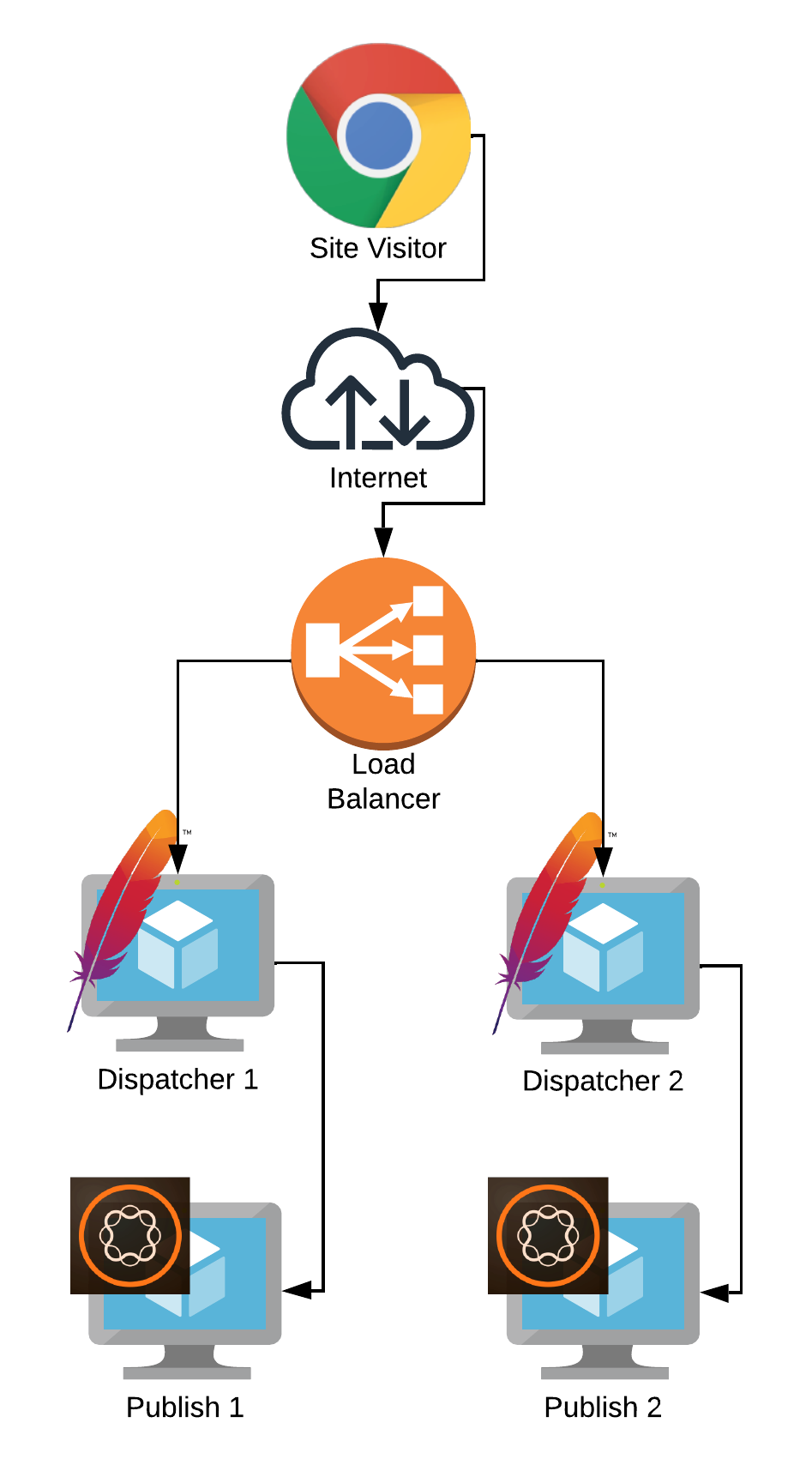Dispatcher
In AEM the Dispatcher is a caching and load balancing tool that sits in front of the Publish Instance. It intercepts incoming requests from users, caches static and dynamic content, and forwards requests to the appropriate Publish Instance. The primary function of the Dispatcher is to cache content served by AEM. This caching mechanism stores both static and dynamic content, providing faster access to frequently requested data. It includes a wide range of file types such as HTML pages, images, CSS files, JavaScript, and other assets, making it a versatile tool for improving website performance. AEM Dispatcher plays a crucial role in optimizing the performance and delivery of content to end-users.
In AEM Dispatcher perform in many ways to provide high performance and manage caching:
- Provides load balancing by performing operations like sending specific requests to the AEM instances and increasing the processing power.
- Manages caching by updating and removing content.
- Automatically invalidate the part of the cache that may be out of date.
- Integrates seamlessly with other components of the AEM ecosystem, including AEM author and publish instances, AEM Forms, Adobe Target, and Adobe Analytics.
- Provides an additional layer of security by protecting AEM instances from direct exposure to the internet and can be configured to filter and block malicious requests, helping to mitigate security threats.

Load Balancer
The primary purpose of a load balancer in AEM is to evenly distribute incoming requests (HTTP/HTTPS) from clients across multiple AEM instances. It helps seamless resource use and ensures high availability and scalability of the AEM deployment. By continuously monitoring the health and performance of Publish Instances, the Load Balancer can effectively redirect traffic to healthy instances and ensure a seamless experience for users, especially during periods of high demand. You can add additional AEM instances behind a load balancer to handle increased traffic. This can be achieved by either using a hardware-based or software-based load balancer. The best part is that the end-user experience remains unaffected.
Additionally, load balancers offer a range of capabilities, such as:
- Monitoring and logging
- Allowing administrators to track traffic patterns.
- Monitor the health of AEM instances.
- Troubleshoot issues related to load balancing.

Conclusion:
Throughout this blog, we’ve explored the instances within AEM, from Author Instances for content creation to Publish Instances for content distribution, Dispatcher to manage cache and load balancer. These AEM instances work together to simplify the content lifecycle, from creation and review to publication and delivery. They form the backbone of a robust digital experience platform, enabling organizations to deliver engaging and personalized experiences to their audiences across various channels and devices.
Previous Blog Part 1: A Comprehensive Guide to AEM Instances: Types, Uses, and Management




